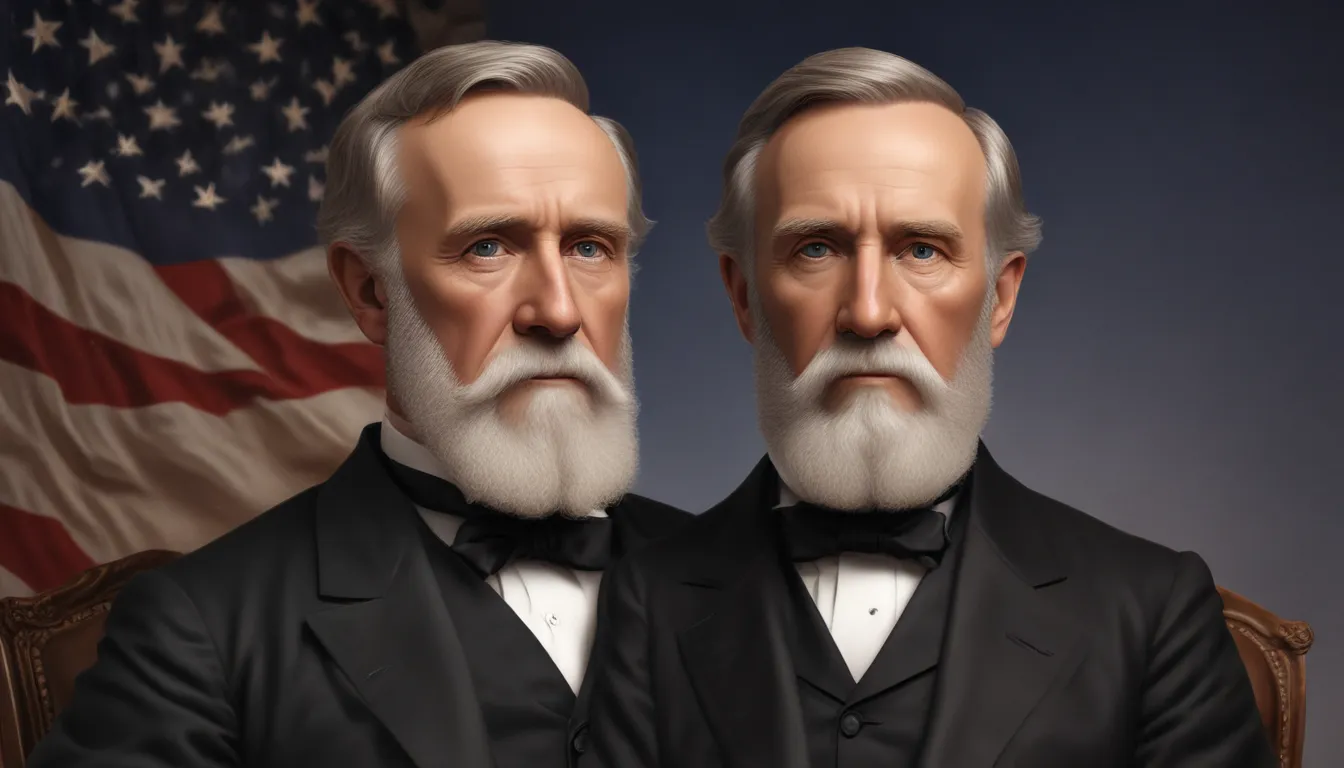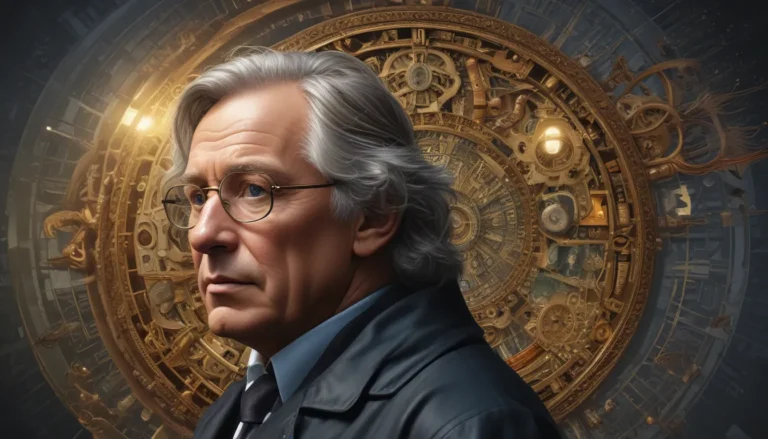The images in our articles may not match the content exactly. They are used to grab your attention, not to show the exact details in the text. The images complement the text but do not replace it.
Are you curious about the enigmatic figure behind the beard, Rutherford B. Hayes? While he may be known as the 19th President of the United States, there is a captivating story beyond his political journey. Delve into the world of Rutherford B. Hayes, a trailblazer in educational reform and civil service reform, as we unravel 25 fascinating and quirky fun facts about him. Brace yourself for a rollercoaster ride of surprises, amusement, and a touch of bewilderment as we explore the lesser-known side of President Hayes. Get ready to witness history like never before with these intriguing tales!
Unveiling the Journey of Rutherford B. Hayes
Rutherford Birchard Hayes was born on October 4, 1822, in Delaware, Ohio, emerging as the 19th President of the United States. His early days were marked by humble beginnings, with his father passing away just before his birth. Raised by his resilient mother, Sophia Birchard Hayes, Rutherford’s formative years were shaped by the values of hard work and education.
- Hayes’s namesake pays tribute to his father’s brother, Rutherford, and his mother’s family name, Birchard.
- Despite financial constraints, Hayes received a quality education, attending Kenyon College and later Harvard Law School.
The Trailblazing Military Service and Political Ascent
Before his presidential tenure, Hayes distinguished himself in the Civil War, earning the rank of major general. His valiant service on the battlefield paved the way for a successful political career, leading to his election to Congress and subsequent tenure as the Governor of Ohio.
- Hayes demonstrated unwavering bravery by being wounded five times during the Civil War in support of the Union cause.
- His military valor catapulted him to political stardom, garnering immense popularity in Ohio and nationwide.
Unraveling the Intriguing Presidency of 1876
The election of 1876 stands out as one of the most contentious in American history, with Hayes facing off against Democrat Samuel J. Tilden. Despite losing the popular vote, a compromise in the Electoral College secured the presidency for Hayes.
- The Compromise of 1877 sealed Hayes’s presidential victory in exchange for the withdrawal of federal troops from the South, signaling the demise of Reconstruction.
- Hayes bore the brunt of skepticism from critics, earning monikers like “Rutherfraud” and “His Fraudulency” due to the contentious nature of his election.
Presidential Reign and Reforms
Hayes’s presidency from 1877 to 1881 witnessed fervent efforts to reform the civil service and bridge the lingering divides in the post-Civil War era.
- Pioneering significant civil service reforms, Hayes implemented executive orders prohibiting federal employees from mandatory campaign contributions.
- Despite challenges, Hayes championed the rights of African Americans through federal legislation, albeit facing obstacles in a politically charged environment.
Post-Presidential Endeavors and Legacy
Following his term, Hayes opted not to seek re-election and returned to Ohio, immersing himself in educational, humanitarian, and social causes until his demise in 1893.
- Hayes played a pivotal role in establishing Ohio State University and served on its board of trustees.
- His ardent advocacy for educational and prison reforms mirrored his lifelong commitment to public service.
Delving into the Personal Life and Enduring Legacy
Hayes’s personal tale intertwined a strong family ethos and a profound marriage to Lucy Webb Hayes, a staunch advocate for temperance.
- Lucy Webb Hayes stood out as the first First Lady with a college degree, embodying intellectual prowess and advocacy.
- The couple, renowned for their sobriety in the White House, embraced a modest lifestyle, earning Lucy the moniker “Lemonade Lucy” for her stance against alcohol at official functions.
A Final Tribute to Hayes’s Impact
Rutherford B. Hayes may not resonate as loudly as his peers in history books, yet his legacy commands recognition for its transformative essence. From shaping the end of Reconstruction to championing civil service reform and education for African Americans, Hayes’s presidency marked a period of subtle yet profound change. His emphasis on restoring faith in governance and embracing technological innovations like the telephone reverberates as a testament to progress and justice. Hayes’s enduring legacy, rooted in reform and equality, continues to leave an indelible mark on American history, resonating through the annals of time.
Frequently Asked Questions About Rutherford B. Hayes
What set Rutherford B. Hayes apart as a unique president?
Embracing an era post-Civil War, Hayes spearheaded the end of Reconstruction and focused on civil service reform and education for African Americans, fostering unity in a divided nation.
How did Hayes secure the presidency without winning the popular vote?
In the contentious 1876 election, Hayes emerged victorious through a special Electoral Commission that resolved disputed electoral votes, granting him a one-vote margin in the Electoral College.
Did Hayes harbor a fondness for pets during his presidential term?
Hayes and his family shared a deep affinity for animals, with a diverse menagerie at the White House that included cows, a goat named Old Whiskers, and the first Siamese cat in the United States.
What was Hayes’s stance on technology and innovation?
With a keen interest in progress, Hayes installed the first telephone in the White House, illustrating his embrace of new communication avenues and leadership styles.
How did Hayes contribute to education during his presidential tenure?
Hayes advocated for education reform, championing federal aid for education and paving the way for enhanced educational opportunities, especially for African Americans.
What leisure pursuits did Hayes indulge in throughout his life?
Beyond politics, Hayes found solace in reading, fishing, and horseback riding, embodying an ethos of staying active and engaged in the world around him.
Which causes did Hayes dedicate himself to post his presidency?
After leaving office, Hayes remained dedicated to public service, focusing on educational initiatives, veterans’ affairs, and prison reform, underlining his belief in education as a transformative force in society.
Enriching Insights for Inquisitive Minds
At the core of our mission lies an unwavering commitment to delivering enriching and credible content to our audience. Each fact shared on our platform stems from valuable contributions by users like you, infusing a diverse tapestry of insights and knowledge. With dedicated editors ensuring the veracity and authenticity of every submission, you can trust in the quality and reliability of the information you encounter. Explore, learn, and discover with us, as we continue to uphold the highest standards of accuracy and engagement in our pursuit of knowledge.
Explore, engage, and delve deeper into the captivating world of Rutherford B. Hayes, a visionary figure whose contributions continue to reverberate through the corridors of history.






